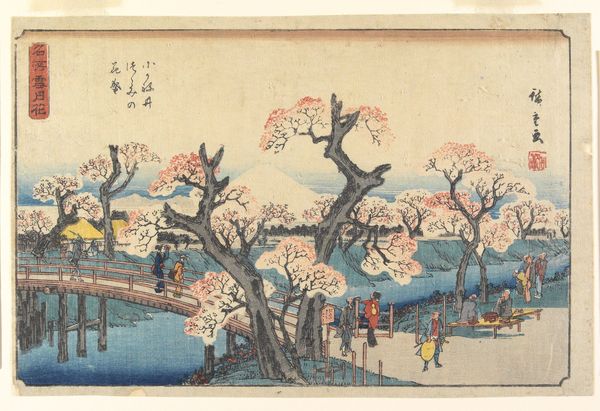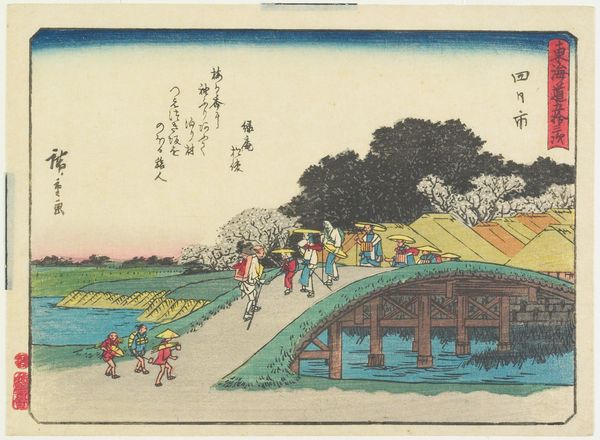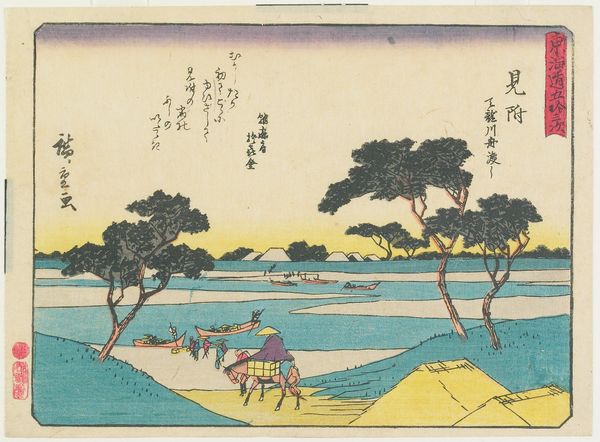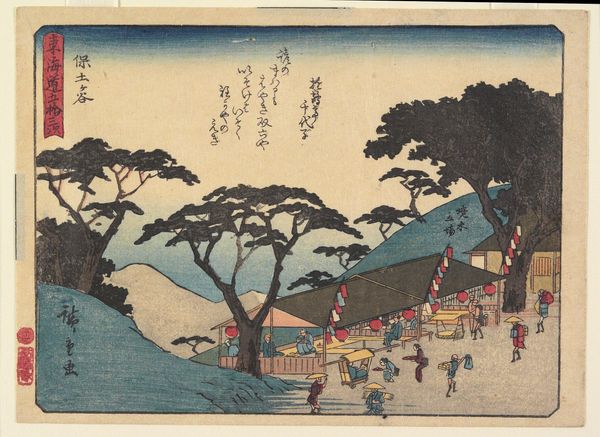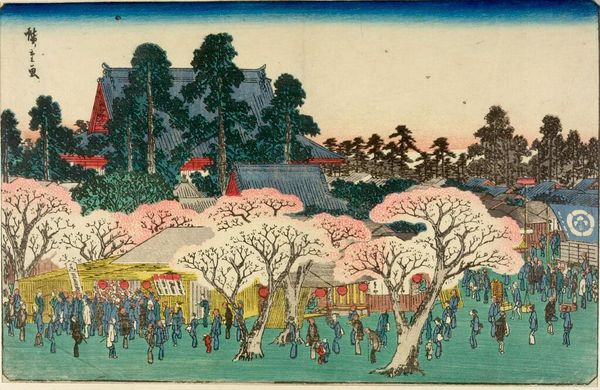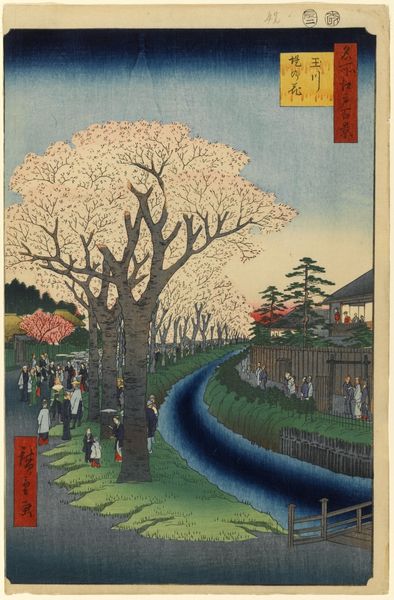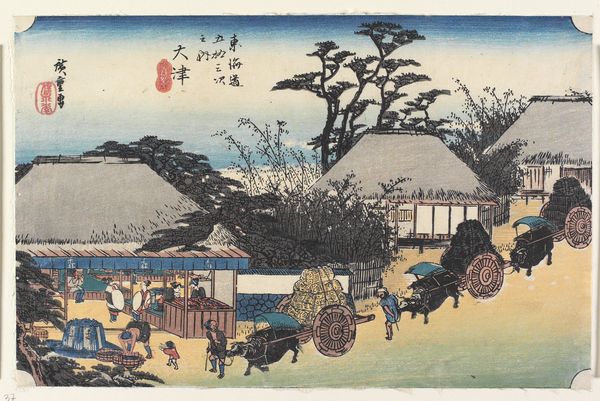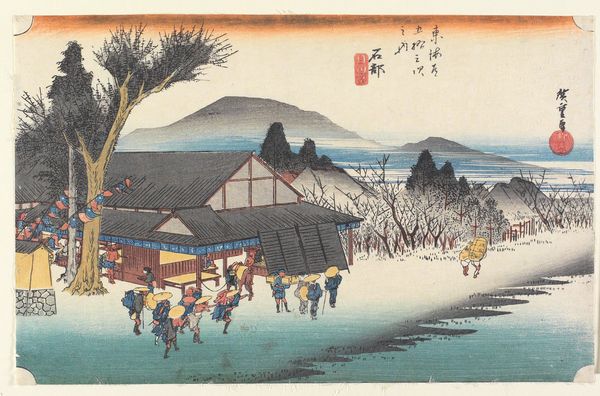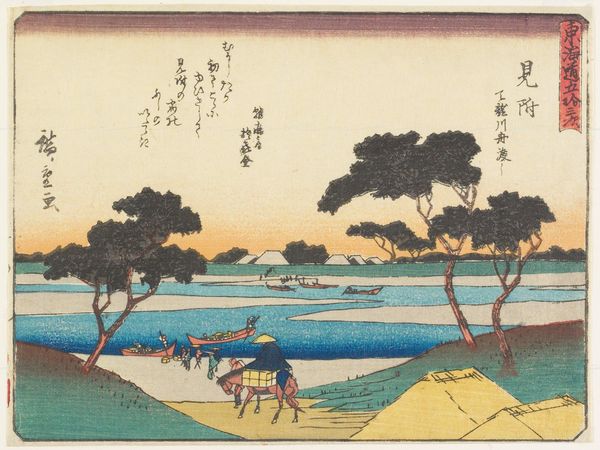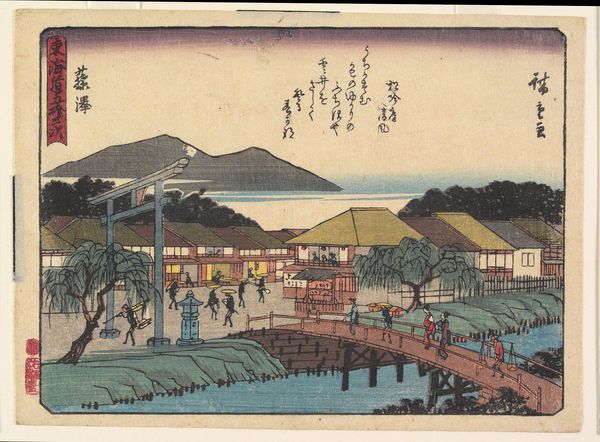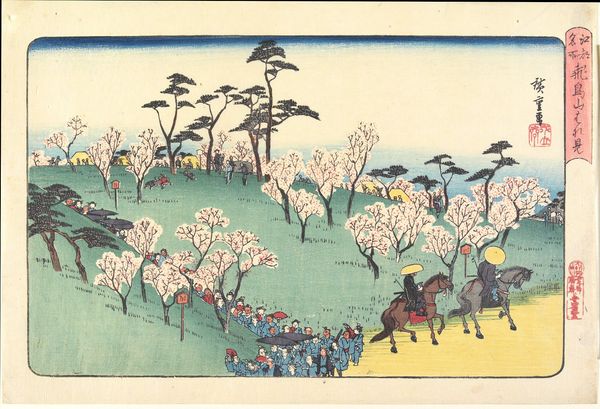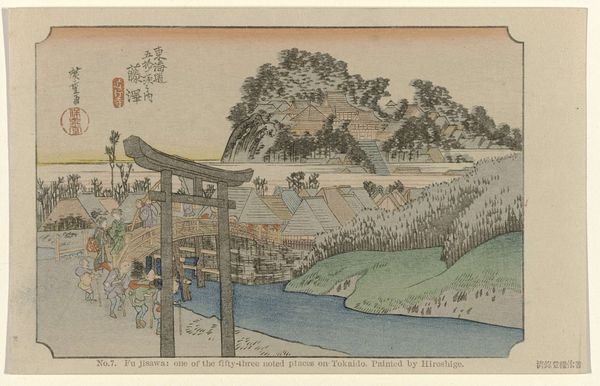
Toeizan Temple at Ueno (Ueno Toeizan no zu), from the series "Famous Places in the Eastern Capital (Toto meisho)" c. 1832 - 1838
0:00
0:00
print, woodblock-print
# print
#
asian-art
#
landscape
#
ukiyo-e
#
woodblock-print
#
cityscape
Dimensions: 25 × 38.2 cm (9 13/16 × 15 1/16 in.)
Copyright: Public Domain
Editor: This woodblock print, “Toeizan Temple at Ueno” by Kitao Shigemasa, is incredibly charming. It depicts a bustling temple scene framed by cherry blossoms. The colors are so delicate, and there's a real sense of depth. How do you interpret this work? Curator: Immediately, the abundance of cherry blossoms strikes me. The cherry blossom, or *sakura*, is laden with symbolism in Japanese culture. Beyond its obvious beauty and association with spring, it's a powerful symbol of *mono no aware* - the pathos of things, the awareness of impermanence. We are invited to meditate on fleeting beauty, but what else do you see? Editor: I noticed the figures are very small and seem to be going about their daily lives amidst the grandeur of the temple and nature. Curator: Exactly! Consider that these small figures against the temple suggests humanity’s relationship to something greater. How do these symbols contribute to a deeper understanding? What narratives might these symbols and interactions trigger, perhaps concerning the human condition or cycles of nature? Editor: Well, I suppose the small figures could highlight the insignificance of the individual within a larger cosmic order. Or it could even imply that, through reverence or participation in the temple's activities, people can connect with a larger power, the human striving for something eternal despite transient nature. Curator: Precisely. The Ueno temple itself carried great significance, serving as a Tokugawa family temple and embodying a specific form of Buddhism that promoted inner cultivation. And in connecting the inner with the outer world, one gains some semblance of eternity. The symbols become not merely aesthetic elements, but bridges to enduring concepts of harmony and cyclical existence. Editor: I never considered that! I see now that it's not just a pretty landscape, but an exploration of profound themes about life, death, and the search for meaning. Curator: Indeed. Ukiyo-e prints can unveil hidden layers of understanding if we learn how to examine visual symbolism as it has been formed and informed by history and society.
Comments
No comments
Be the first to comment and join the conversation on the ultimate creative platform.
